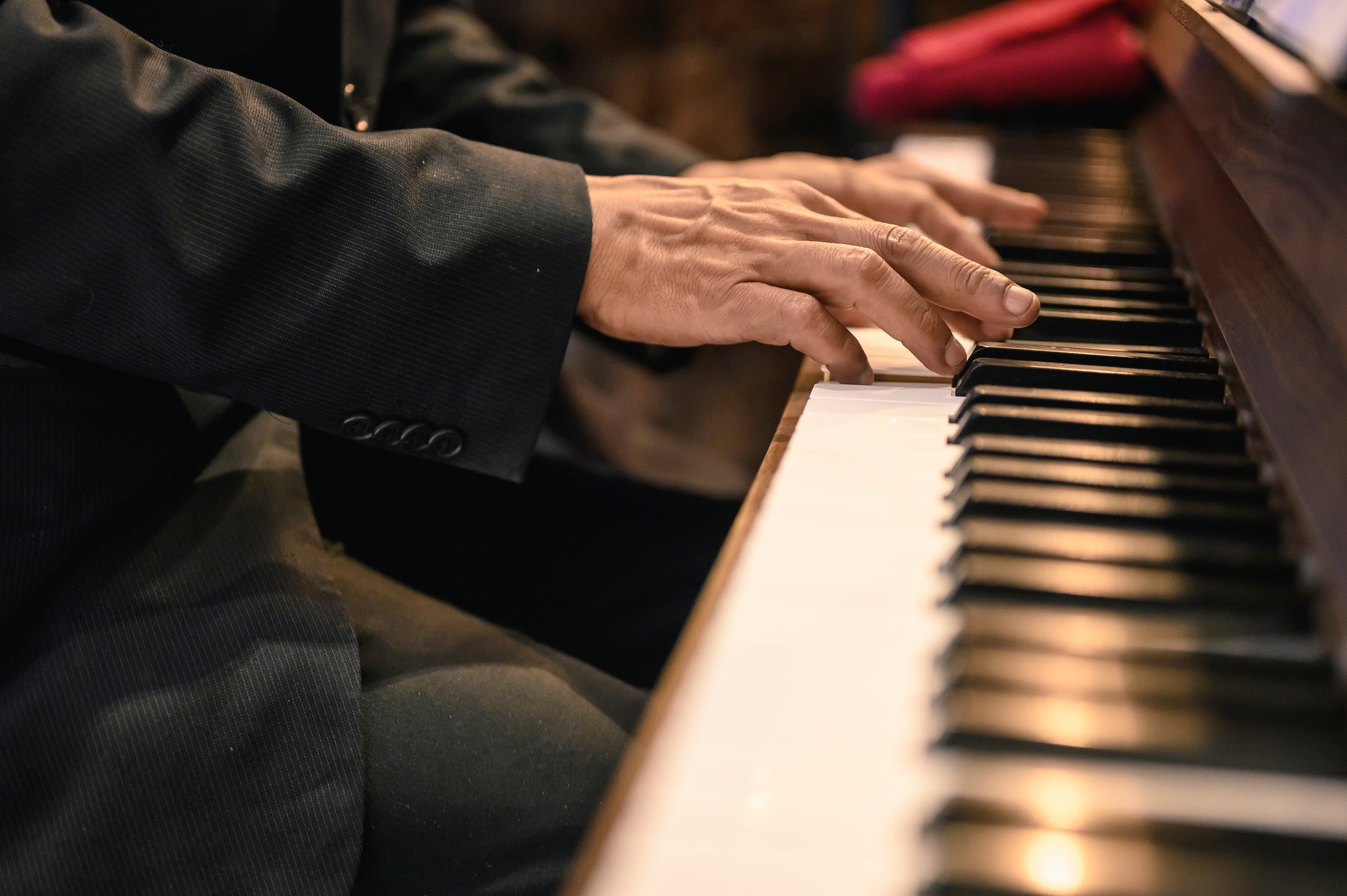
A note tells us how high or low a sound should be and how long or short that sound should last.
The relative placement from high to low of a musical sound is called its pitch.
The length of a note in time is called its rhythmic value or duration.
Boundaries of Pitch
A pitch is not the same as the scientific measurement of a sound’s position, high or low. That’s called frequency and is important to other disciplines. You can listen to a frequency sweep below. Music divides this wide range of high and low notes into groupings of twelve notes that repeat at every octave. Tuning is important here so that all notes start at the same reference point.
The standard reference point for tuning is usually the note A 440. This means a tone at 440 Hertz is labeled A. An octave above A 440 is twice as high at A 880, and an octave below is twice as low at A 220. The notes between these two octaves are subdivided into two even tones that our musical ear perceives as 12 pitches.
The miracle of music is that after every doubling or halving of frequency, we hear pitches as being the same note, just higher or lower. This is the phenomenon of the octave discussed in the previous section.
Boundaries of Rhythm
The speed of music is called the tempo. Tempo is the steady pace of the music. It can be fast, slow, or somewhere in the middle. The tempo of a song is generally fixed so that the music plays within an established grid. Otherwise, the timing of the notes would be totally random, and musicians would struggle to play together. Listen to a rhythmic sweep below.
A tempo sets a steady beat for the music to follow. All other notes can fall somewhere within that “grid” of determined beats. Tempos are counted in beats per minute which is usually shortened to BPM. A BPM of 100 is simple 100 beats for every minute of the clock. This is a convenient way of standardizing different tempos for different speeds of music.
A slow tempo is somewhere between 60-80 BPM. Moderate tempos are anywhere from 80-120 BPM. Fast tempos are 120 and up. Tempos below 60 BPM are usually too slow to follow, and anything about 180 is very fast.
Time Signatures & Measures
Rhythms are the timing and duration of notes in music. To organize a piece is music, we need to know when a note should be played, how long to hold it, and how it relates to other notes. Different note types show different note values. To better organize all these various rhythms, a time signature is used. A time signature states how many beats will be held in each measure or bar. Bars or measures are separated by vertical lines called bar lines. Between two bar lines is a measure. One measure will always have exactly the number of beats indicated in the time signature.
Note Values
The duration of a note is indicated by the type of notehead, stem, and flag. The note names are chosen by how many beats they take up. A whole note gets four beats, a half note gets two, a quarter note gets one, and an eighth note gets half a beat. Below are the four most common notes with the number of beats they are assigned.
Common Notes
Whole Note
Quarter Note
Half Note
Eighth Note
Notes & Measures
Each measure is filled with a precise number of beats as indicated by the time signature. We’ve learned about the 4/4 time signature, which has four quarter notes in each measure, as displayed below. This time signature has a steady, straightforward feel to it.
If every measure in a 4/4 bar needs four quarter notes, we can determine how many of each basic note type is required to fill one measure.
Counting helps us keep track of where we are in the measure. Each measure has four numbered beats. In the image above, counting and playing are simple because each beat is one note. When we want to count a whole note, we need to hold the beat for a whole four beats. This is easier to hear on an instrument with a lot of sustain. When we play half notes, we hold each note for two beats. Eighth notes are twice as fast as a beat (fitting eight total in a 4/4 measure.). For every beat that passes, we will play exactly two evenly-spaced beats.
Listen to the examples below with a drum and a guitar and try to count along. In the background, you will be able to hear the steady clicking of the beat. This is the metronome, a device used to help reference the tempo of a song. I’ve set this demonstration to 80 BPM. You’ll hear four beats of the metronome, and then the demonstration will play.
Rhythm and Pitch
When we look at the basics of rhythm and pitch, we see that music is read horizontally and vertically. The horizontal location of a note shows us the rhythm and the vertical position shows us the pitch.
When notes are arranged on a staff with exact horizontal and vertical positions, we can notate musical ideas. Listen to the playback of “Ode To Joy” and watch the notes pass by. Notice how the melody rises when the notes move higher on the staff and falls when the notes move lower on the staff. Some notes repeat with different rhythms. Together, the pitches and rhythms make up the melody we recognize as “Ode To Joy.”








